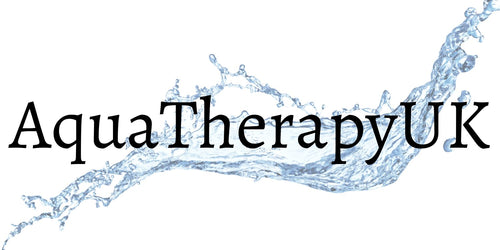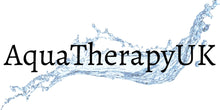An important turning point in a woman's life is the menopause, which is the natural end of her menstrual cycle. The symptoms of menopause start years earlier during a phase known as perimenopause. However, women in the UK typically experience menopause at age 51. A series of mental and physical changes, such as mood swings, vaginal dryness, sleep difficulties, hot flashes, and night sweats, frequently accompany it. One menopause is a normal aspect of ageing and is not an illness, despite the fact that these symptoms might be upsetting. Saunas, especially infrared saunas, are a tool that is becoming more and more popular in the wellness industry. These gadgets, which generate heat using light, have drawn interest because they can help with menopausal symptoms and improve general health. When paired with other wellness practices like consistent exercise, healthy eating, and better sleep patterns, saunas provide a comprehensive approach to menopausal management and thriving during this phase of life. Through the provision of evidence-based guidance on how to maximize health and wellness throughout this time of life, this blog seeks to empower women facing menopause. In addition to delving into the newest wellness trends, we'll look at practical methods for handling common symptoms and how to develop a comprehensive approach to wellbeing both during and beyond menopause.
Understanding Menopause: The Hormonal Shift
Between the ages of 45 and 55, menopause usually happens. It is brought on by a decrease in the ovaries' synthesis of progesterone and estrogen. Numerous body processes, such as metabolism, bone health, mood, and cardiovascular health, are significantly influenced by estrogen. Women go through many menopausal symptoms when their estrogen levels drop.
Why Start Early?
Women are better equipped to handle the difficulties of menopause if they put their health first in their 30s and 40s. They may lessen the effects of menopause-related symptoms and age with more vigour by forming behaviours that promote hormonal balance, cardiovascular health, and mental clarity. Wellness is about laying the groundwork for long-term health, not simply about treating symptoms. After menopause, hormonal, metabolic, and body composition changes to increase the risk of developing chronic diseases such as diabetes, osteoporosis, and heart disease. These illnesses can be avoided or postponed with a proactive attitude to wellbeing. Early health investment pays off later. Exercise, saunas, and healthy eating are examples of wellness habits that can improve longevity and quality of life.
Common Menopausal Symptoms
Vasomotor Symptoms: The most identifiable signs of menopause include chills, hot flashes, and nocturnal sweats. Hormonal shifts cause the body's thermostat to fluctuate, which is why they happen.
Vaginal Changes: Lower estrogen levels may result in dryness, tissue thinning, and reduced flexibility in the vagina, which may make sexual activity uncomfortable.
Sleep Disruptions: Night sweats and hot flashes can seriously interfere with sleep cycles, causing weariness and drowsiness during the day.
Mood Swings: Areas of the brain that control mood include estrogen receptors. Depression, anxiety, and irritability can all be exacerbated by changes in estrogen levels.
Changes in Body Composition: Menopause can cause a loss in muscle mass and an increase in belly fat, which can impact body weight and metabolism.
Cognitive Changes: During menopause, some women may suffer from forgetfulness, concentration issues, and brain fog [1].
1. Symptom Management for Menopause: Practical Techniques
Even though menopause is a normal process, you may take certain actions to control your symptoms and enhance your general health. Consider the following evidence-based tactics:
I. Nutrition's function
Beyond calories, foods high in nutrients are essential.
Fruits and vegetables: Packed with minerals (such as calcium and magnesium), vitamins (particularly C and E), and antioxidants, they help maintain bone health, prevent cell damage, and control hormones. Women who ate more fruits and vegetables had fewer hot flashes and decreased the intensity of their menopausal symptoms overall, according to research published in the Journal of Nutrition.
Whole Grains: Offer long-lasting energy, fibre to support healthy digestion, and vital B vitamins, which are important for stress reduction and hormone synthesis. Studies indicate that eating whole grains may lower your chance of developing chronic illnesses, including heart disease and type 2 diabetes, which are more common during and after menopause.
Lean protein: Maintaining muscular mass, which decreases with ageing, requires lean protein. Loss of muscle mass might raise the risk of falls and lower metabolism. Lean protein is abundant in fish, chicken, beans, lentils, tofu, and Greek yoghurt.
Healthy fats: Consume foods high in healthy fats, such as olive oil, avocados, almonds, and seeds. These fats are essential for heart function, hormone synthesis, and inflammation reduction. Research has indicated that diets high in monounsaturated fats, including those in avocados and olive oil, can lower the risk of chronic illnesses and enhance cardiovascular health.
Calcium and Vitamin D: Due to increasing bone loss (osteoporosis) after menopause, calcium and vitamin D are especially critical for bone health. Calcium may be found in leafy greens (kale, collard greens), dairy products (milk, yoghurt, and cheese), almonds, and fortified meals. Egg yolks, fortified dairy products, fatty fish (tuna, salmon), and sunlight exposure are all good sources of vitamin D. Research indicates that postmenopausal women's risk of osteoporosis can be considerably decreased by consuming enough calcium and vitamin D.
Phytoestrogens: These substances derived from plants replicate the physiological effects of estrogen. According to some studies, phytoestrogens may help reduce vaginal dryness and hot flashes, two menopausal symptoms. Sources include whole grains, lentils, flaxseeds, and soy products (soybeans, tofu, and soy milk). Although some studies have suggested that phytoestrogens may be beneficial, further investigation is required to comprehend how they affect menopausal symptoms completely.
Hydration: To keep hydrated and support general body processes, drink lots of water throughout the day. Menopausal symptoms such as headaches and exhaustion can be exacerbated by dehydration [2].
II. Exercise's Power
Weight management: Changes in metabolism and body composition, including an increase in belly fat, can result during menopause. Frequent exercise aids in:
· Burn calories to help control weight and lower the risk of health issues associated with obesity.
· Maintaining and increasing muscle mass helps prevent sarcopenia, an age-related loss of muscle that can lower metabolism and raise the risk of falls.
Research has indicated that resistance exercise can assist postmenopausal women in retaining their muscle mass and enhancing their body composition.
Bone Health:
Walking, running, dancing, and weightlifting are examples of weight-bearing activities that serve to strengthen bones and lower the risk of osteoporosis. Studies have repeatedly shown that weight-bearing exercise improves bone mineral density in women who have gone through menopause.
Enhancement of Mood: Endorphins, which are natural mood enhancers that help lessen the symptoms of anxiety, despair, and exhaustion, are released when you exercise. Research has demonstrated that regular exercise can raise mood, lessen depressive and anxious symptoms, and improve postmenopausal women's general quality of life.
Better Quality Sleep: By lowering stress and enhancing sleep patterns, regular exercise can help people sleep better. Research has indicated that exercise can help those with insomnia, a frequent sleep issue among women going through menopause, get better sleep.
Heart Health: Exercise reduces the risk of heart disease by strengthening the heart, lowering blood pressure, and improving blood circulation. Postmenopausal women who engage in regular physical exercise have a lower risk of cardiovascular illness, which includes heart attacks and strokes [3].
Exercise Types
The goal is to engage in moderate-intensity aerobic exercise for at least 150 minutes or vigorous-intensity aerobic exercise for 75 minutes per week. Jogging, swimming, cycling, dancing, and brisk walking are a few examples.
Strength Training: Perform strength training activities two to three times a week. This can include bodyweight workouts (such as push-ups, lunges, and squats), resistance bands, or weightlifting. Improve your flexibility, balance, and coordination by including exercises like yoga, pilates, or tai chi. These exercises can assist in avoiding accidental falls [4].
III. Hormone Replacement Therapy (HRT)
In HRT, hormones that are depleting during menopause are replaced. A large number of menopausal symptoms can be successfully reduced with HRT. However, HRT is not suited for everyone. To find out if HRT is the best option for you, it's critical to go over the possible advantages and disadvantages with your healthcare professional.
What is HRT?
HRT replaces the hormones that decrease during menopause. Usually, it includes:
Estrogen therapy: Replaces the diminishing levels of estrogen. It can be applied as vaginal creams, gels, patches, or pills.
Combined Hormone Treatment (CHT): Progestin (a kind of progesterone) and estrogen are both included in combined hormone treatment (CHT). This combination is often suggested for women who still have a uterus to avoid the expansion of the uterine lining.
Benefits of hormone replacement therapy (HRT)
Effective symptom relief: HRT is very effective at reducing the frequency and intensity of menopausal symptoms, especially
Vaginal dryness and atrophy: HRT can improve vaginal lubrication and restore vaginal tissue elasticity.
Mood swings and irritability: HRT can help stabilize mood and reduce symptoms of anxiety and depression.
Bone health: Estrogen is essential for bone health; HRT can help prevent bone loss and lower the risk of osteoporosis.
Cardiovascular health: According to some research, HRT may have some cardiovascular benefits, like lowering cholesterol.
Risks and Considerations
Uterine cancer: Progestin therapy is necessary for women with uteruses to prevent the overgrowth of the uterine lining (endometrium), which can increase the risk of uterine cancer.
Blood clots: HRT may slightly increase the risk of blood clots (deep vein thrombosis and pulmonary embolism).
Breast cancer: The Women's Health Initiative (WHI) study, a large-scale research trial, initially raised concerns about an increased risk of breast cancer with long-term HRT use. Subsequent studies have demonstrated that the risks are lower with current, lower-dose HRT regimens and may be influenced by factors such as the type of estrogen used, the timing of initiation, and individual risk factors.
Stroke and heart attack: Individual risk factors and the type of HRT used may determine the risk of stroke and heart attack, which is generally low.
HRT is a useful treatment option for many women experiencing bothersome menopausal symptoms, but it is important to carefully weigh the potential benefits and risks and discuss the options with your healthcare provider. Together, you can create a customized treatment plan that addresses your unique needs and concerns [5].
2. Saunas: A Transformative Tool for Menopause
A popular health aid for coping with the mental, emotional, and physical difficulties of menopause is the sauna. Women can improve their general health and manage a variety of menopause-related symptoms by utilizing heat treatment, especially in the form of infrared saunas. A thorough explanation of how saunas affect particular menopausal symptoms may be found below.
Saunas have long been linked to purification and relaxation, but they also provide many other health advantages, particularly for women going through menopause. People looking for specific treatment for menopausal symptoms are increasingly turning to infrared saunas.
Infrared saunas employ light to heat the body directly via the skin, as opposed to typical saunas that heat the air around you. In addition to providing deeper therapeutic effects, this makes the encounter more pleasant [6].
Sauna Types
Conventional Saunas: Both electrically heated and wood-burning solutions fall under this category; both are usually heated to between 150 and 195 degrees Fahrenheit (65.55 and 90.55 degrees Celsius). Most often have humidity levels below 20%.
Infrared Saunas: This kind of sauna generates heat that is usually lower than that of regular saunas using infrared lamps and electromagnetic wizardry. Infrared saunas usually have temperatures between 110 and 135 degrees Fahrenheit (43.33 and 57.22 degrees Celsius).
Benefits of Saunas
Temperature Regulation and Hot Flash Relief: Hot flashes are one of the most annoying menopausal symptoms; they can occur suddenly and interfere with day-to-day activities. Frequent sauna usage lessens the frequency and intensity of hot flashes by assisting the body in adjusting to temperature changes.
Boosting Metabolism and Combating Weight Gain: Because of hormonal changes that impede metabolism, menopausal women frequently suffer from weight gain. By boosting heart rate and calorie burn, infrared saunas replicate the benefits of moderate exercise. When exposed to heat, the body strives to cool itself and keep the heart rate high, which results in this calorie burn. Up to 600 calories can be burned during a 30-minute infrared sauna session. Regular sauna usage can enhance insulin sensitivity and aid in weight control, according to *Nutrition.org* research [7]. Hormonal fluctuations can cause a buildup of pollutants that can further impair metabolism by slowing the body's natural detoxification mechanisms. Saunas encourage perspiration, which improves liver function and helps the body rid itself of toxins [8].
Detoxification and Skin Health: Dryness and lack of suppleness are two effects of menopause on the skin. Saunas promote perspiration, which enhances circulation and aids in the removal of toxins, thereby providing the skin with internal nourishment. Toxins such as chemicals, heavy metals, and waste products are removed from the body through sweat. Better detoxification can help women feel lighter and more invigorated by reducing bloating and lethargy associated with menopause [9]. Menopause frequently results in decreased collagen synthesis and dryness, which weakens the skin's suppleness. Saunas enhance skin hydration and texture by increasing blood flow to the skin, which delivers vital nutrients and oxygen. A healthier, more luminous complexion is the result [10].
Cardiovascular Health and Blood Circulation: Because menopause alters arterial elasticity, blood pressure, and cholesterol levels, it raises the risk of cardiovascular illnesses. During this stage, saunas can be quite helpful in preserving heart health. By widening blood vessels, sauna heat enhances oxygen supply and circulation throughout the body. This lowers blood pressure and improves cardiovascular health and function. Similar to moderate exercise, infrared saunas, in particular, increase heart rate and enhance cardiovascular endurance. Regular sauna usage has been demonstrated to improve vascular flexibility and decrease arterial stiffness, which lowers the risk of heart attacks and strokes [11].
Stress Reduction and Cognitive Health: Mood swings, anxiety, and mental fog might result from elevated cortisol levels, which are typical after menopause. Saunas stimulate the release of endorphins, which lower cortisol and encourage relaxation. This boosts concentration and memory in addition to elevating mood. Frequent sauna usage improves oxygen delivery and nutrient absorption by increasing blood flow to the brain. A decrease in inflammation Brain fog is exacerbated by persistent inflammation. Saunas promote clearer thinking by lowering inflammatory indicators [12].
Sleep Regulation: One of the most difficult menopausal symptoms is sleep disruption, which has an impact on mood, vitality, and general health. Weight gain, mental fog, and hot flashes can all be made worse by little sleep. Mental clarity, tissue healing, and hormone balancing all depend on getting enough restorative sleep. Women who regularly receive 7 to 9 hours of good sleep report feeling better overall and experiencing fewer menopausal symptoms. In the evening, using a sauna promotes melatonin synthesis, reduces cortisol levels, and relaxes muscles, all of which set the body up for sound sleep. It is easier to fall and remain asleep when the body gradually cools down after a sauna session, simulating the natural drop in body temperature that happens before bed.
Muscle Recovery and Pain Reduction: Due to a decrease in estrogen, which is important for bone and joint health, menopause is frequently accompanied by muscle and joint discomfort. These aches and pains can be effectively relieved by saunas. Heat treatment eases joint pain, stiffness, and muscular tension. Because of reduced estrogen levels, this can be especially helpful for women who are showing early symptoms of osteoarthritis or joint inflammation. By boosting circulation and providing nutrients to aching muscles, saunas help in muscle rehabilitation when combined with an exercise regimen. They also promote regular exercise by lowering delayed onset muscular soreness (DOMS) [13].
Wellness Trends to Watch in 2025
The wellness sector is expanding quickly worldwide, and a number of developments are expected to influence how women see their health throughout menopause:
Sauna Innovations: With portable models and household installations growing in popularity, infrared saunas are becoming more widely available.
Personalized Wellness Plans: Individualized health advice based on hormone profiles and genetic testing is now possible thanks to technology.
Sleep Optimization Tools: Women's attitudes about rest are changing as a result of gadgets that track sleep patterns and suggest lifestyle adjustments.
Final Thoughts
Menopause is not the end of vitality; rather, it is the start of a new chapter. Women can flourish throughout this shift by adopting holistic wellness practices, including consistent sauna treatments, focused exercise regimens, a healthy diet, and placing a high priority on sleep. Particularly, saunas provide a special blend of symptom treatment, cleansing, and relaxation, which makes them an excellent complement to any wellness regimen. A better, healthier future is guaranteed when you invest in your health now. Every action is a step toward empowerment and rejuvenation, whether you're committing to a workout regimen, trying out new recipes, or scheduling saunas into your weekly routine.
Many of the mental and physical difficulties associated with menopause can be addressed naturally and non-invasively using saunas. Saunas offer a comprehensive strategy for handling this transitional stage, from reducing hot flashes and enhancing cardiovascular health to aiding in weight loss and enhancing mental clarity. They enable women to not only manage menopause but also flourish throughout and after it when combined with a healthy lifestyle that includes enough diet, consistent exercise, and excellent sleep hygiene.







